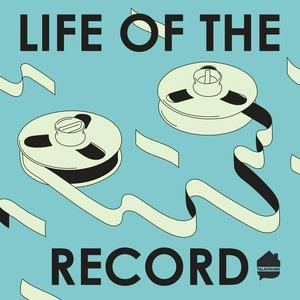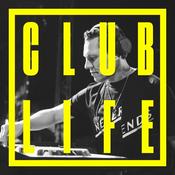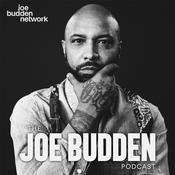Tillgängliga avsnitt
5 resultat 58
- The Making of "Fairytale of New York" by The Pogues - featuring Steve Lillywhite, Jem Finer and James FearnleyIn celebration of the Pogues’ 'Fairytale of New York' EP, we take a detailed look at how their classic Christmas single came together. The Pogues originally formed in London in 1982 by Shane MacGowan, Spider Stacy and Jem Finer. MacGowan had gotten his start playing in the punk band, the Nipple Erectors, and when that band broke up, he began playing in an Irish traditional music style. Gradually, he brought in James Fearnley, Cait O’Riordan and John Hasler to become a sextet. Andrew Ranken replaced John Hasler as they signed with Stiff Records. Their debut album, Red Roses for Me, was released in 1984. For their second album, they added Philip Chevron on guitar and hired Elvis Costello as their producer. Rum Sodomy & the Lash was released in 1985, and they continued working with Costello for the Poguetry in Motion EP, released in 1986. At this point, Cait O’Riordan left the band and they updated the lineup to include Darryl Hunt and Terry Woods. They signed to Island Records and hired Steve Lillywhite to produce their third album. If I Should Fall from Grace with God was eventually released in 1988 and included the Christmas single, “Fairytale of New York.” In this episode, Steve Lillywhite describes working with the Pogues at this pivotal time in their career when they were expanding the lineup and becoming more ambitious with their song structures and arrangements. Despite not having experience recording a traditional folk band, Lillywhite proved to be the right producer for the Pogues at this moment. His input and confidence in the studio led to them splicing two sections of “Fairytale of New York” together and also enlisting his wife Kirsty MacColl to sing the female part in the song. Jem Finer talks about his initial writing process for the song and how he wrote two potential Christmas ideas that his wife Marcia dismissed as being far too sentimental. Her input led to him rethinking the song and writing about a down on their luck couple, inspired by people who lived in their neighborhood in London. Finer describes how Shane MacGowan then took the song and moved the setting to New York City and added some key lines that were taken from real conversations. James Fearnley describes the thrill of recording the opening section with just piano and voice and how he practiced repeatedly to be able to get that part right. He talks about how the song deserved an ambitious string arrangement and so he worked out some ideas on a synthesizer before bringing in Fiachra Trench to help with the orchestration. By taking inspiration from film scores like Ennio Morricone’s Once Upon a Time in America and Leonard Bernstein’s On the Waterfront, Fearnley talks about wanting to bring a cinematic sound to match the classic American story that was being told. From the song’s long gestation period of a few years, to Steve Lillywhite bringing the tapes home and casually asking Kirsty MacColl to sing on it, to the inspiration behind the classic “I could’ve been someone” line, to the initial disappointment of getting to number 2 in the charts, to the perfect sparring duet partners in Shane and Kirsty, to the anti-Christmas Christmas song that has become timeless, we’ll hear the stories of how the record came together.--------1:13:20
- The Making of 4 by Foreigner - featuring Lou GrammIn celebration of the deluxe edition of Foreigner’s fourth album, 4, we take a detailed look at how it was made. After Mick Jones broke into the music industry as a session musician while playing in multiple bands, including Spooky Tooth, he envisioned starting a new project for the songs he was writing. He recruited musicians Ian McDonald, Dennis Elliott, Al Greenwood and Ed Gagliardi before turning his attention to finding the right lead singer for the band. After recalling meeting Lou Gramm when he was the singer of the Rochester, New York band Black Sheep, Jones asked Gramm to audition in New York City. Gramm was immediately hired and the lineup was complete. They signed a deal with Atlantic Records and released their self-titled debut album in 1977, which became a big success. Their second album, Double Vision, was released in 1978 and continued their run of hit singles. For their third album, Head Games, they clashed with producer Roy Thomas Baker and the album was not as successful as the first two. Rick Wills had taken over on bass at this point and after Head Games, they decided to let go of Ian McDonald and Al Greenwood to become a four-piece. They hired producer Mutt Lange and began recording at Electric Lady Studios. Foreigner 4 was eventually released in 1981. In this episode, Lou Gramm shares stories of growing up in Rochester, getting to see artists like Jimi Hendrix and the Rolling Stones, which went on to inspire his lyrics for “Jukebox Hero.” He describes this turning point moment for the band when they wanted to update their sound and image for the 1980s. By paring down to a four-piece and bringing in outside musicians like Thomas Dolby on synthesizers, they forged a new path forward for the band. With the help of producer Mutt Lange, they were able to focus on crafting a tight set of rock songs while exploring new sonic territory with songs like “Waiting for a Girl Like You” and “Urgent.” From long hours and late nights in the studio, to Mutt Lange’s perfectionist tendencies, to Thomas Dolby’s art rock approach, to Mick Jones falling in love with synthesizers, to spontaneously recruiting Junior Walker for a saxophone solo, to a mysterious muse in the studio while recording “Waiting for a Girl Like You,” to both Foreigner and Mutt Lange at the height of their powers, we’ll hear the stories of how the album came together.--------1:11:29
- The Making of PSYCHOCANDY by The Jesus and Mary Chain - featuring Jim Reid and William ReidFor the 40th anniversary of The Jesus and Mary Chain’s landmark debut album, Psychocandy, we take a detailed look at how it was made. Growing up in East Kilbride, Scotland, brothers William and Jim Reid had their lives changed by punk and both made plans to start their own bands. When they had trouble finding like-minded musicians in their town, they realized they could pool their resources and start a band together. After their father was made redundant from his job at a factory, he gave them a gift of 300 pounds, which they used to buy a Portastudio 4-track machine. Recording the songs they were writing allowed them to find the sound of the band that they were looking for. By 1984, they had recruited Douglas Hart on bass and Murray Dalglish on drums and were sending around a demo tape to try and get gigs. Their tape was passed on to Bobby Gillespie, who loved it and connected them with Alan McGee of Creation Records. After seeing them live, McGee signed them to a deal and they released their first single, “Upside Down,” in 1984. The single, along with their notorious live performances, generated a lot of interest and they ended up signing a deal with a subsidiary of Warner Music Group, called Blanco y Negro. At this point, Bobby Gillespie replaced Murray Dalglish on drums and they released their follow-up single, “Never Understand,” in early 1985. Their full-length debut album, Psychocandy, was eventually released in late 1985. In this episode, Jim Reid describes the impetus for starting a band with his brother William and how they would spend hours talking about music and envisioning the type of band that could start a cultural revolution. He describes how they were of a shared mind in those early days and how they would each write songs and flipped a coin to ultimately decide that Jim would become the lead singer. William Reid talks about his punk-inspired approach to guitar and how a chance purchase of a used Shin-ei fuzz pedal from a neighbor kid gave him the sound he was looking for. By blending feedback and noise with 60s-inspired pop, the Reid brothers found their unique sound and went to great lengths to protect it from being watered down by the record company. From being emboldened to experiment by engineer John Loder, to the chaos of their early live gigs, to the standup drumming style of Bobby Gillespie, to swapping shifts in the studio with Ministry, to creating an album where every song could be a single, to punk music as the missing ingredient in their lives, to their shared confidence in making a record that would stand the test of time, we’ll hear the stories of how the album came together.--------1:45:05
- The Making of TRAMP by Sharon Van Etten - featuring Sharon Van Etten and Aaron DessnerIn celebration of Sharon Van Etten’s breakthrough third album, Tramp, we take a detailed look at how it was made. Growing up in New Jersey, Sharon Van Etten studied music by learning several instruments and singing in the choir. After graduating high school, she went to Middle Tennessee State University to study recording. Though she started writing songs around the year 2000, she didn’t perform or release music until 2005 when she moved back to New Jersey. Later she moved to New York and started working for Ba Da Bing Records. She signed to the Language of Stone label and released her debut album, Because I Was in Love in 2009. Her next record, Epic, was released in 2010 and included the song “Love More,” which was recorded for the Shaking Through documentary series. After a group of musicians, including Aaron Dessner of The National and Justin Vernon of Bon Iver, covered the song “Love More,” Sharon reached out to them to see if they’d be interested in collaborating. She began recording songs with Aaron Dessner in his garage studio in Brooklyn. Her third album, Tramp, was eventually released in 2012. In this episode, Sharon Van Etten describes this pivotal moment in her career when she was gaining confidence as an artist and learning how to collaborate with other musicians. She talks about how Aaron Dessner’s garage studio offered a her a place of refuge during a time when she was living between sublets and keeping her belongings in her car. In the garage studio, they were able to spend the course of a year building up her songs from minimal demos into fully fleshed out arrangements. Aaron Dessner describes his first time producing for another artist and how he was immediately struck by Sharon’s voice and musical mind. He talks about the music culture in Brooklyn at the time where he would be able to call in friends and collaborators to come over and record whenever they had time. This allowed them to have a community of voices, string arrangements and a full band sound for the record, which was new for Sharon’s music at the time. From touring with The National, to excavating songs from a hard drive, to bringing in friends like Bryan Devendorf, Zach Condon, Jenn Wasner, Julianna Barwick, Matt Barrick and more, to learning to deal with anxiety and crowds, to taking inspiration from Patti Smith’s Just Kids, to a turning point moment for both Sharon as an artist and Aaron as a producer, we’ll hear the stories around how the record came together.--------1:36:30
- Preview: Fela Kuti: Fear No ManSubscribe to Fela Kuti: Fear No Man. In a world that’s on fire, what is the role of art? What can music actually…do? Can a song save a life? Change a law? Topple a president? Get you killed? In Fela Kuti: Fear No Man, Jad Abumrad—creator of Radiolab, More Perfect, and Dolly Parton’s America—tells the story of one of the great political awakenings in music: how a classically trained 'colonial boy’ traveled to America, in search of Africa, only to return to Nigeria and transform his sound into a battering ram against the state—creating a new musical language of resistance called Afrobeat. For years, the world’s biggest stars made pilgrimages to Nigeria to experience Fela’s Shrine, the epicenter of his musical revolution. But when the mix of art and activism got too hot, the state pulled out its guns, and literally opened fire. Fela Kuti: Fear No Man is an uncategorizable mix of oral history, musicology, deep dive journalism, and cutting edge sound design that takes listeners deep inside Fela’s life, music, and legacy. Drawing from over 200 interviews with Fela Kuti’s family, friends, as well as scholars, activists, and luminaries like Burna Boy, Paul McCartney, Questlove, Santigold, and former President Barack Obama (just to name a few), Fela Kuti: Fear No Man journeys deep into the soul of Afrobeat to explore the transformative power of art and the role artists can play in this current moment of global unrest. An Audible Original presented by Audible and Higher Ground. Produced by Western Sound and Talkhouse. ©2025 Higher Ground, LLC (P)2025 Audible Originals, LLC.--------37:00
Fler podcasts i Musik
Trendiga poddar i Musik
Om Life of the Record
Classic albums, told by the people who made them.
Podcast-webbplatsLyssna på Life of the Record, DJ 50 Spänn och många andra poddar från världens alla hörn med radio.se-appen

Hämta den kostnadsfria radio.se-appen
- Bokmärk stationer och podcasts
- Strömma via Wi-Fi eller Bluetooth
- Stödjer Carplay & Android Auto
- Många andra appfunktioner
Hämta den kostnadsfria radio.se-appen
- Bokmärk stationer och podcasts
- Strömma via Wi-Fi eller Bluetooth
- Stödjer Carplay & Android Auto
- Många andra appfunktioner


Life of the Record
Skanna koden,
ladda ner appen,
börja lyssna.
ladda ner appen,
börja lyssna.



































